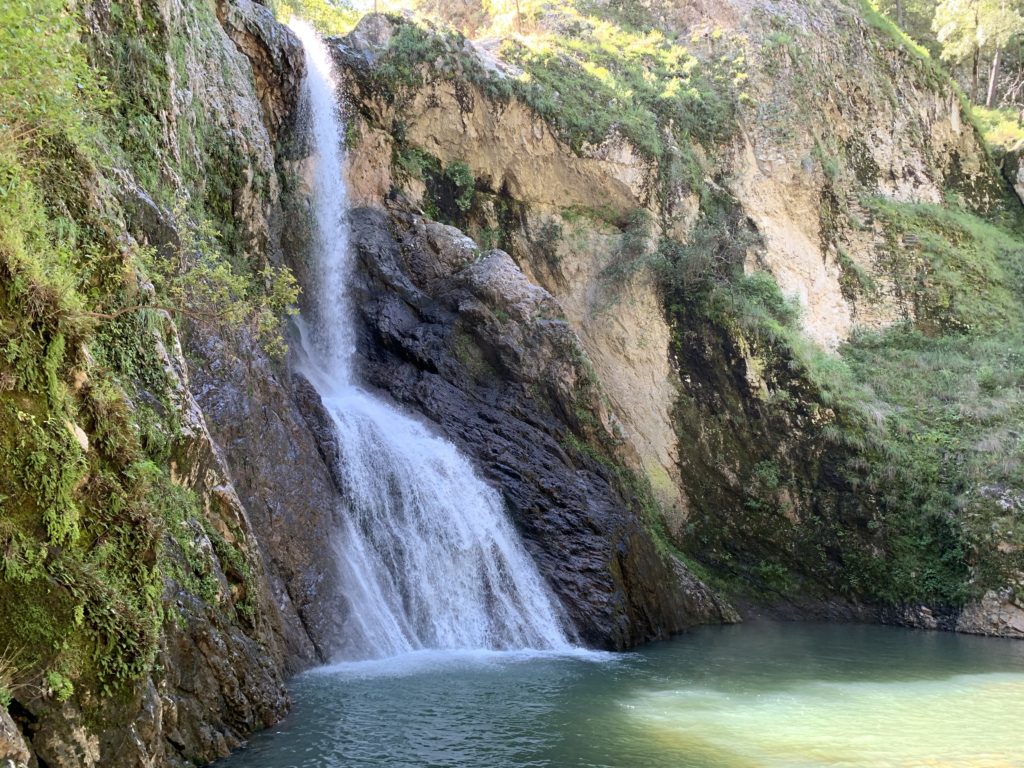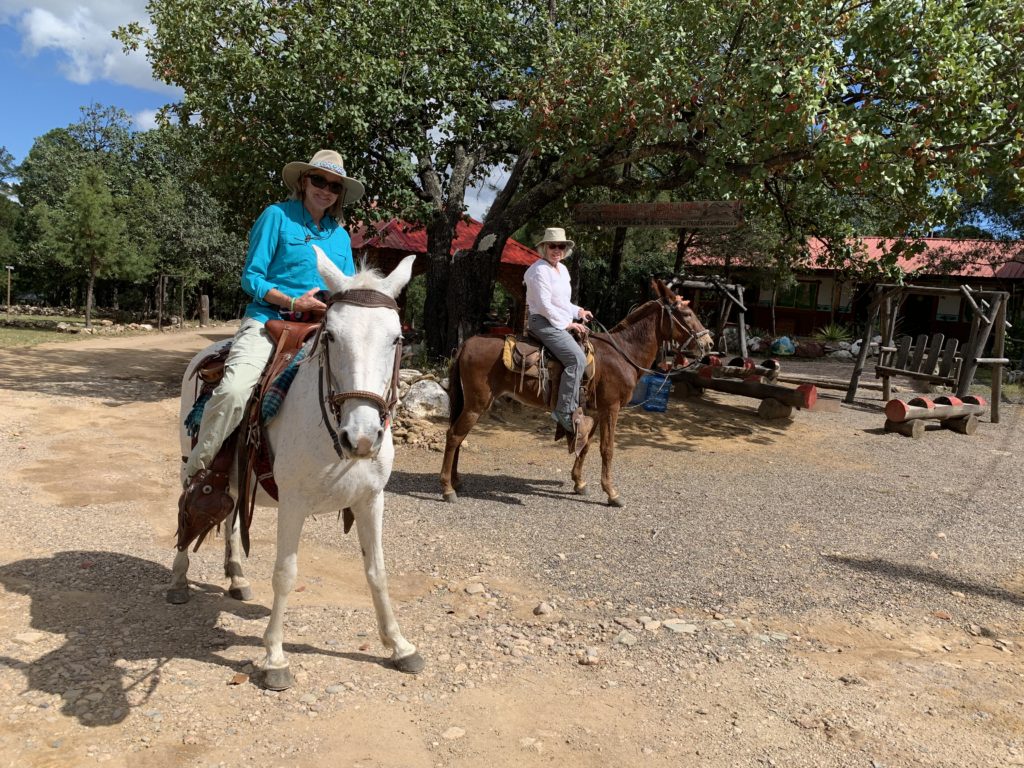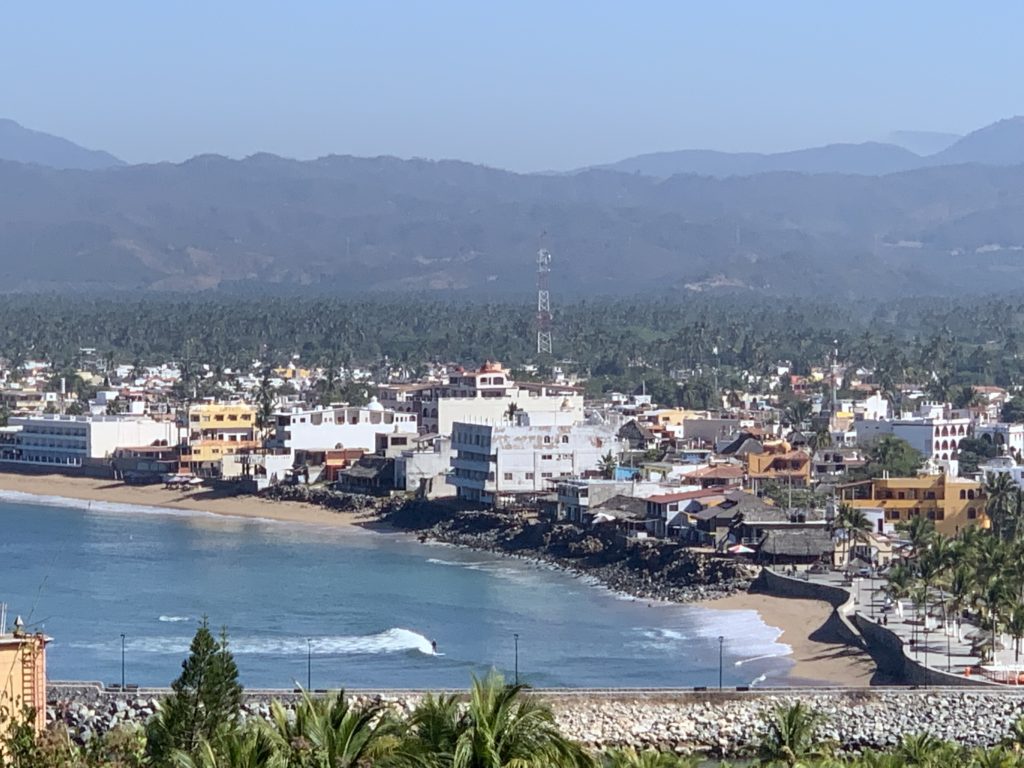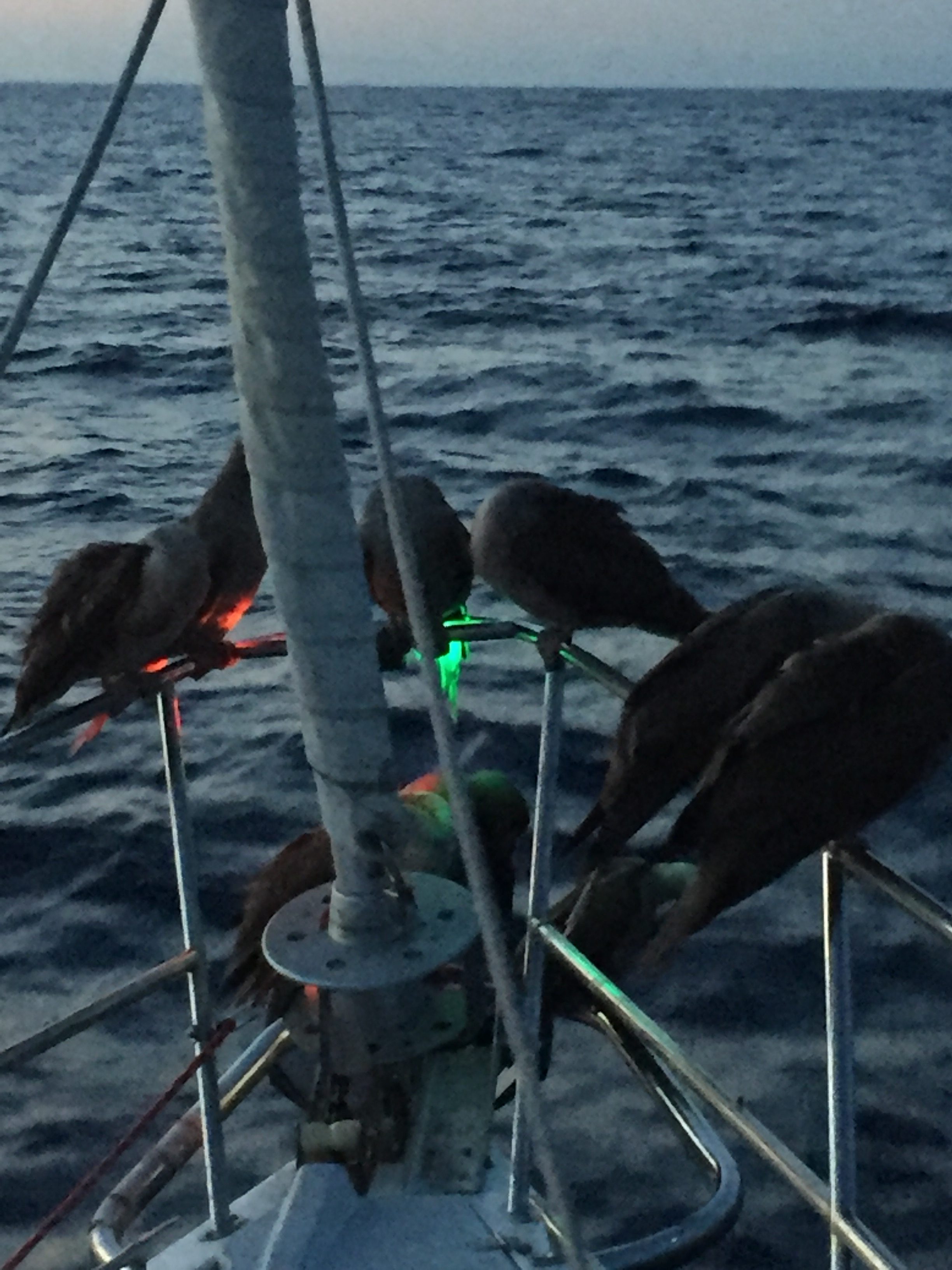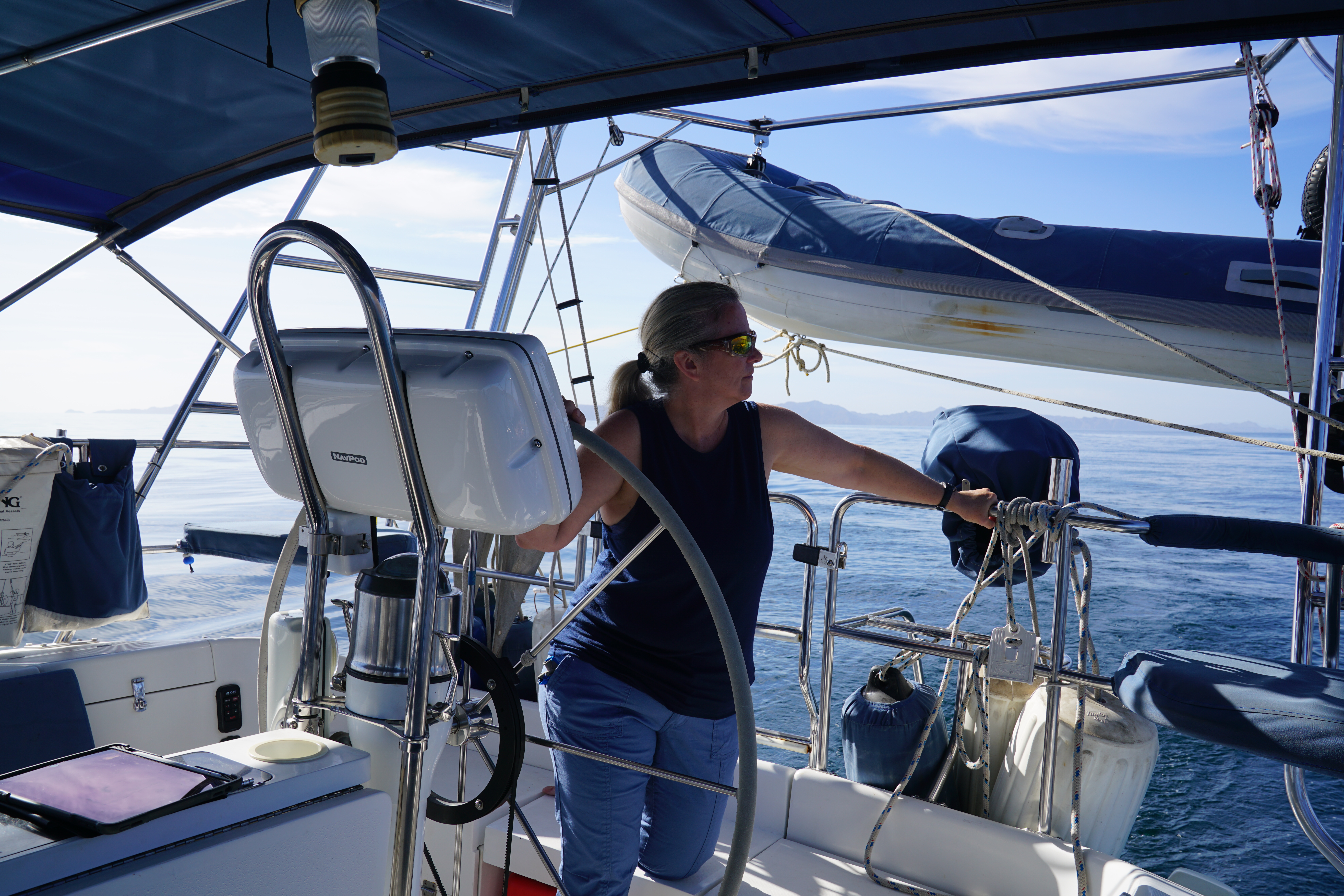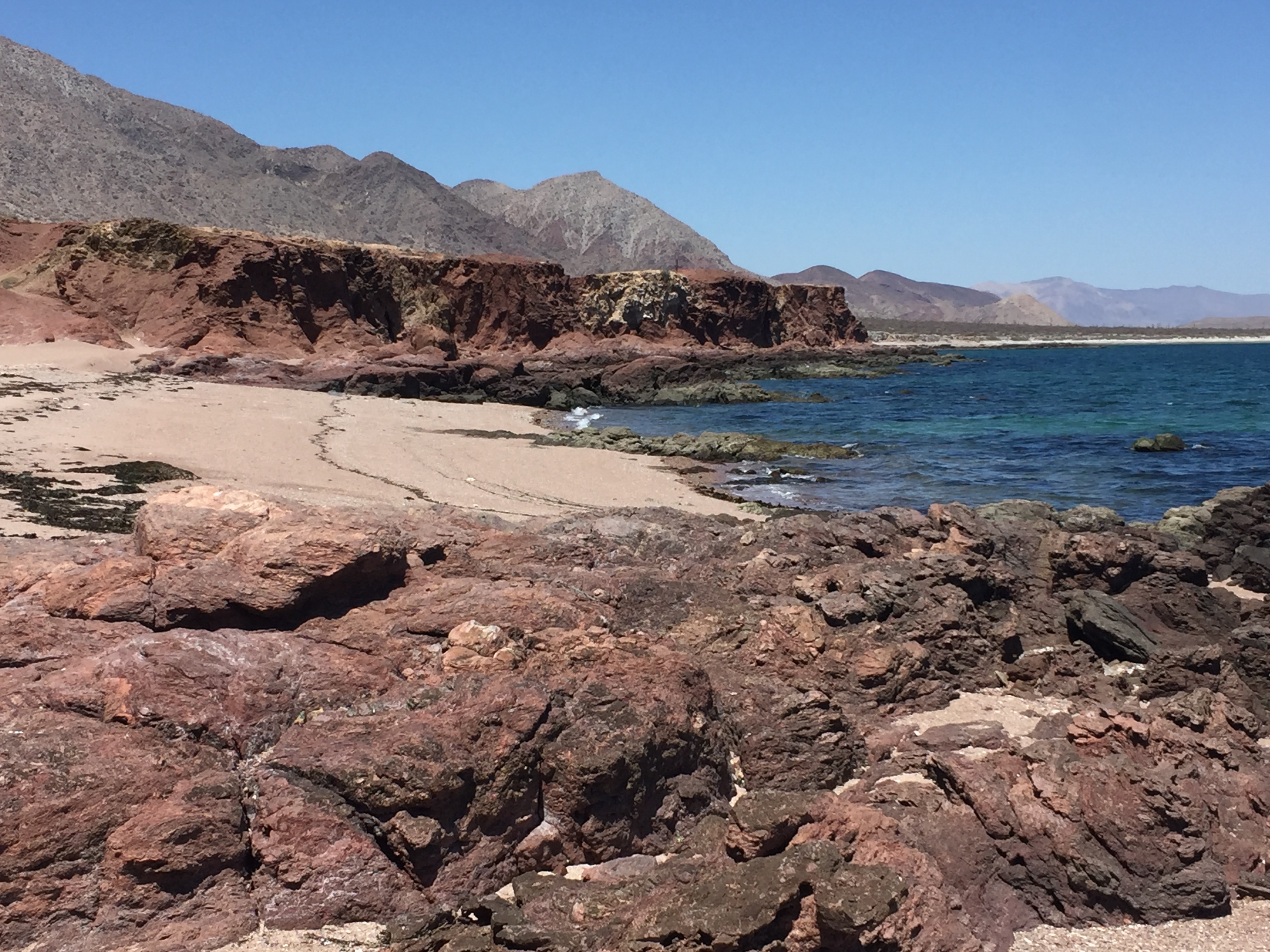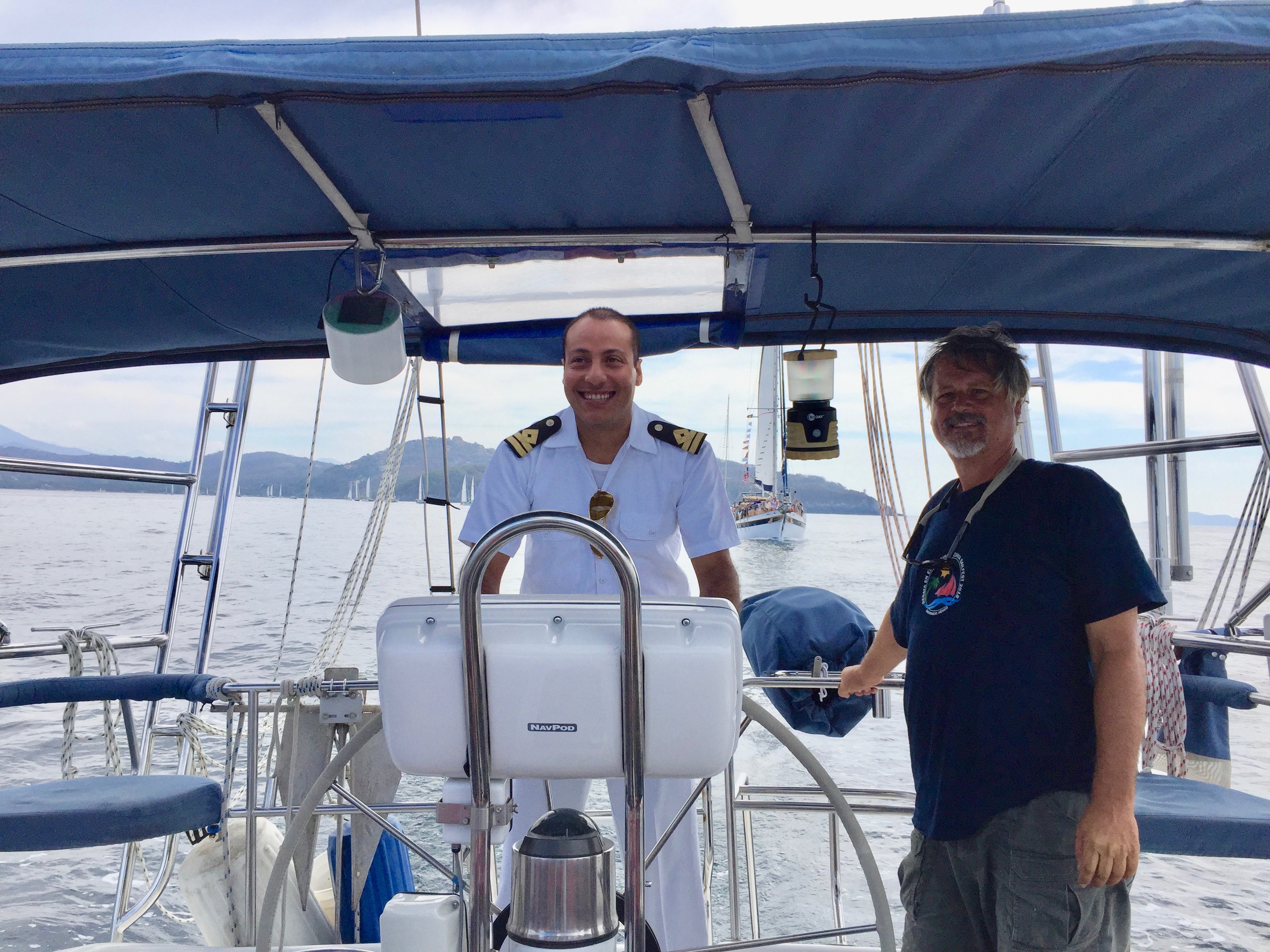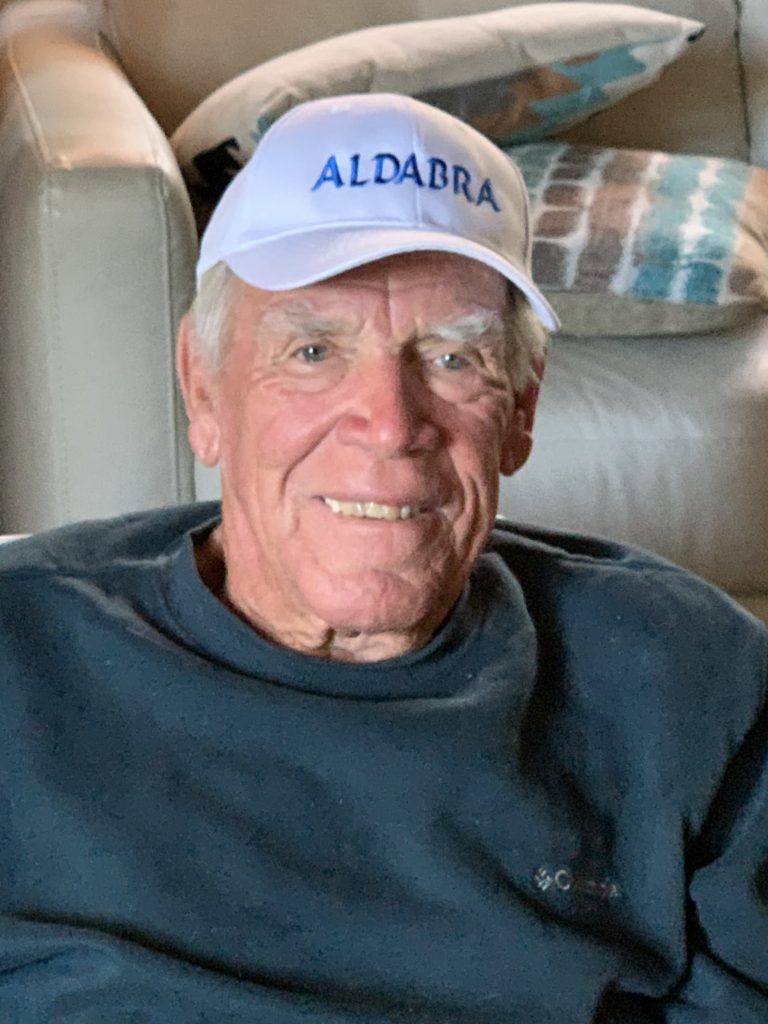
You’ll recall from the early days of this blog that Jim Foley was the person most instrumental in preparing Aldabra and me to go cruising. He coached me on the purchase of the boat, he did most of the work in refitting her, and he taught me how to work on her. He was an invaluable resource. And now I have to say goodbye. Jim died on April 5, 2021 just shy of his 81st birthday, after a stoic battle with cancer. He leaves his wife Linda, four children, many grandchildren, his sister and many nieces and nephews. Jim also leaves a California surfing and sailing community that benefitted so much from his friendship and ingenuity.
You can read others’ insights about how Jim was the Northern California pioneer of surfing’s shortboard, and about the various sailboats that Jim designed and built for racing and then later cruising. He also went through a long phase of passion for windsurfing. There probably wasn’t any aspect of being a waterman that Jim didn’t embody, including swimming, scuba and lifesaving. But design and invention didn’t stop at water-related activities, he also designed and built parts of his homes, refit cars and designed at least one famous logo (O’Neil). But I knew Jim as a long-time friend and mentor.
My story with Jim goes back to my college days in the mid-1970s. I was part of the UC Santa Cruz woman’s sailing team and Jim’s first wife joined us in regattas. The two of them took these young college students under their wing, inviting us to BBQs at their house in Ben Lomond and including us in Santa Cruz Yacht Club events. That was during the time that Jim was racing his iconic Third Reef, and I think we sailed on it. I know we spent the night on it once in Moss Landing after a regatta.
Years later, Jim married my close friend Linda, who was the person who initially brought me onto the university sailing team. Jim and Linda finished building their cruising boat, Dana, and set off around the world for six years. By then, I was pretty immersed in my career in Silicon Valley, spending very little time on the water, but I joined them as crew when I could.
In Tonga, Jim tried to teach me how to do water starts on his windsurfer. I ended up with bloody knees and gave up. I think it was in Tonga that they had me getting up at midnight to go diving for lobster. I was no help. I think I was just befuddled as they darted around to locate and nab their prey. The three of us had a spectacular time sailing throughout all three of Tonga’s island groups. I’m pretty sure those were my first night watches by myself. And that was my first experience with navigation, which was with one of those original brick-size hand-held GPS devices, a paper chart, parallel rulers and a divider. Weather information was by way of an isobar chart received by fax over the ham radio. Communication with fellow cruisers was with VHF and communication with people in the U.S. was by way of ham radio, letters sent using snailmail or by going to an island-based telephone center to make a long-distance call or send a fax. They had made friends with several other cruisers and that was my introduction to the supportive, congenial bonds that cruisers develop.
My next visit was a magical trip from Vanuatu to the Solomon Islands. I arrived with two large duffels full of parts and goodies that they had requested via fax. Jim commandeered a pickup truck to get the goods from the airport to the dinghy, which almost sank under the load. That trip started out with some urgency as we tried (successfully) to outsail a cyclone. Once we were outside the reach of the storm, we found ourselves ghosting by an active volcano in flat, glassy water that seemed to extend forever. I got spoiled sailing on Dana, because the boat moved in in just a whisper of wind. Built using a Santa Cruz 40 mold, she was light and designed to go fast.
We stopped at a few islands in Vanuatu and the Solomons before arriving at Guadalcanal, which would be my departure point. I think Jim and Linda had decided it was easier to trade for lobster, so they were no longer hunting for that crustacean. But they had become experts at catching and cooking coconut crabs, which we did on one remote island. (These crabs with their pinchers can get pretty scary when they get loose on the boat.) We also hiked into the heart of one of the islands to a native village that seemed untouched by the outside world. On the way back, we rode air-filled floats down the streams that flowed back to the ocean. It was an example of how Jim always looked for a way to turn any occasion into frolicking fun.
The next time I was to meet up with Jim and Linda was in Seychelles. We had been in communication by fax and had a rough plan to meet up around May of whatever year that was. (I don’t have my journals with me.) But weeks went by without any word from them. Not really understanding what their circumstances were (like being in the remote Chagos during a year when ham radio propagation was poor and they had no other means of communication), I just decided to fly to Seychelles and see what would happen. I had taken the time off of work and didn’t want to squander it. After arriving on Mahe and checking into a small inn, I took a bus to the harbor to ask around. As I was standing there, a boat that looked very much like Danaarrived in the harbor. Like a thoughtless landlubber, I asked someone in a skiff to take me out to where Dana was anchoring.
So imagine it from their perspective. They are sleep deprived and not feeling all that well after a two-week passage. They are in the middle of anchoring, the most stressful interaction that any cruising couple goes through. And on their passage, they had completed, with great thought, the list they expected to fax to me of all the things they wanted me to bring. On the passage they had been dreaming about those things. And here I am before them, which means a)I will not be bringing anything on their list and b)they are way too tired to interact. I have never seen a more disappointed look on Jim’s face.
Jim and Linda generously forgave me and I moved onto the boat the next day. We took some time to tour around Mahe, visiting local artists. We attended a big independence celebration. And we reprovisioned the boat. After spending some time on other islands in the group, Praslin and La Digue, I think, we headed west, buddy boating with two or three other boats.
The passage was rough at first. Seas were coming from two different directions. And the winds were intense, probably blowing 30-40 knots over two or three days. Waves were crashing into the cockpit from above and filling it with water, or broadsiding the boat. We were tossed around so much that we gave up on regular watches and pinned ourselves into our berths down below to avoid being thrown all over or hit with projectiles. At one point a wave blew the main into tatters and we had to abandon our nests to change it out. For a respite, we took refuge at a small atoll. We didn’t have permission to land, but all the boats anchored for a spell to fix damage and rest from the wind and seas. From there we sailed to Aldabra, to visit the giant tortoises and to dive in the lagoon, which is the largest of any coral atoll in the world.
At that time, in the mid-1990s, Aldabra was inhabited by a small staff of people at a research station. We arranged with them to take us all in a couple of skiffs to the mouth of the lagoon. We were dropped off just as the water was gushing into the lagoon. Through a series of mishaps, we were mostly separated from one another, but we all held onto our masks and road the current into the center of the lagoon along with all kinds of sea creatures. Each of us surfaced when we ran out of air and the boats found and retrieved us. One guy was lost for a couple of hours but we eventually found him alive. We spent those two hours wondering what we would do in the worst-case scenario. Fortunately, it didn’t come to that.
From Aldabra, we set off west again, not knowing exactly where the winds and seas would take us. But we ended up at the island of Mayotte, off the east coast of Africa. I flew from there back to Seychelles and onto France, before flying back to the U.S.
Jim and Linda continued around the southern tip of Africa after they explored the continent by land. They then crossed the Atlantic and explored the Caribbean and eastern side of Central America and the Gulf of Mexico before trucking Dana overland to Oakland. The next time I met up with them on the boat, I took a ferry from Tiberon and spend a couple days with them on Angel Island before they sailed Dana back to their home port of Santa Cruz.
That began their next adventure. They brought twins Trevor and Dana into the world and had a lot of fun raising them. I was with them on a boating trip in British Columbia when the twins were about eighteen months old. We had five adults to keep an eye on two toddlers, which is what it takes when you’re walking along docks. On their boat, which was a MacGregor 26, Jim had installed car seats to keep them safe in the cockpit. When they weren’t trucking the MacGregor around the country or to Mexico, they might be paddling or sailing the canoe that Jim built, or helping coach the kids’ sailing classes or exposing them to some other water or sports activity. Jim took delight in any of the twins’ science or art projects, and Linda was a wellspring of interesting educational or creative projects or outings. They were both fulltime, hands-on parents that passed on their curiosity and boundless energy to their children.
I had always planned to buy a cruising boat when I retired and in 2008 Jim had a slip in the Santa Cruz harbor if I could put a boat in it. So he helped me buy and fix up Aldabra. We were partners in the boat until I took off down the coast to Mexico to begin my cruising adventure. Those roughly eight years of working with Jim on the boat were just plain fun, and I learned a lot. He did projects on the boat during the week while I was working. And I would join in during the weekends when I wasn’t traveling. He did several projects without me (replacing the entire fresh water system, replacing the engine), but would save parts of each project so I could learn. He guided me on what tools I needed, how to maintain each system on the boat, and how to prepare for long passages to remote places.
Jim was always anticipating what could go wrong and helping me prepare for each catastrophe. He would say, “It’s not if things go wrong, it’s about what you do when they go wrong.” Jim was a master at both anticipation and inventing a fix for anything that broke. That was a mindset that I had to learn. I just wanted to put all new parts on the boat and expect that everything would survive, but of course that wasn’t going to be the case. As Jim had explained multiple times, and I of course discovered first hand, owning and journeying on a boat is an endless process of maintenance, repairs and improvements. But the joy you get from making new friends, sharing with old friends, traveling to remote countries and sailing along in a good breeze with the engine off makes it all worthwhile.
I had always hoped that Jim and Linda and the kids would join me at points during my cruising adventure. Jim was aboard when we set off from Santa Cruz to Southern California. And Dana was part of the crew that sailed from Puerto Vallarta to San Diego on a trip that was supposed to be to the Marquesas. And I hold out hope that Linda, Trevor and Dana will still be joining me once the COVID restrictions are lifted. But Jim’s last time on the boat was several weeks ago when he and Linda visited in San Diego and I showed him the modifications I had done in Mexico and San Diego.

He was his usual enthusiastic, supportive self. In all the years I’ve known Jim, he was always supportive. I’m sure he worried about all the things I didn’t know and all the challenges I was likely to encounter. He probably worried about his daughter sailing to the South Pacific with me. But He never voiced any doubts. He just made lists of everything he could impart. I’m so grateful to have had such a friend. I miss him and it pains me that his family has lost him.



















